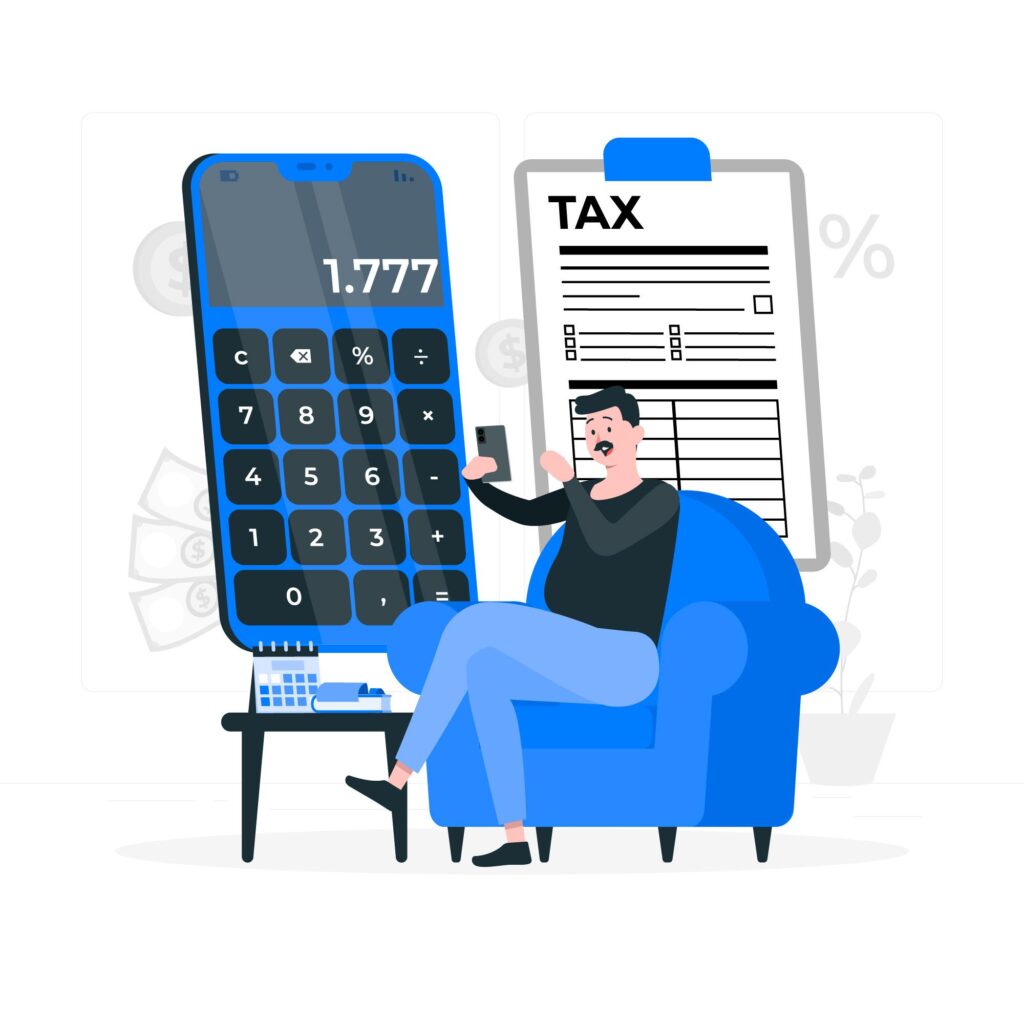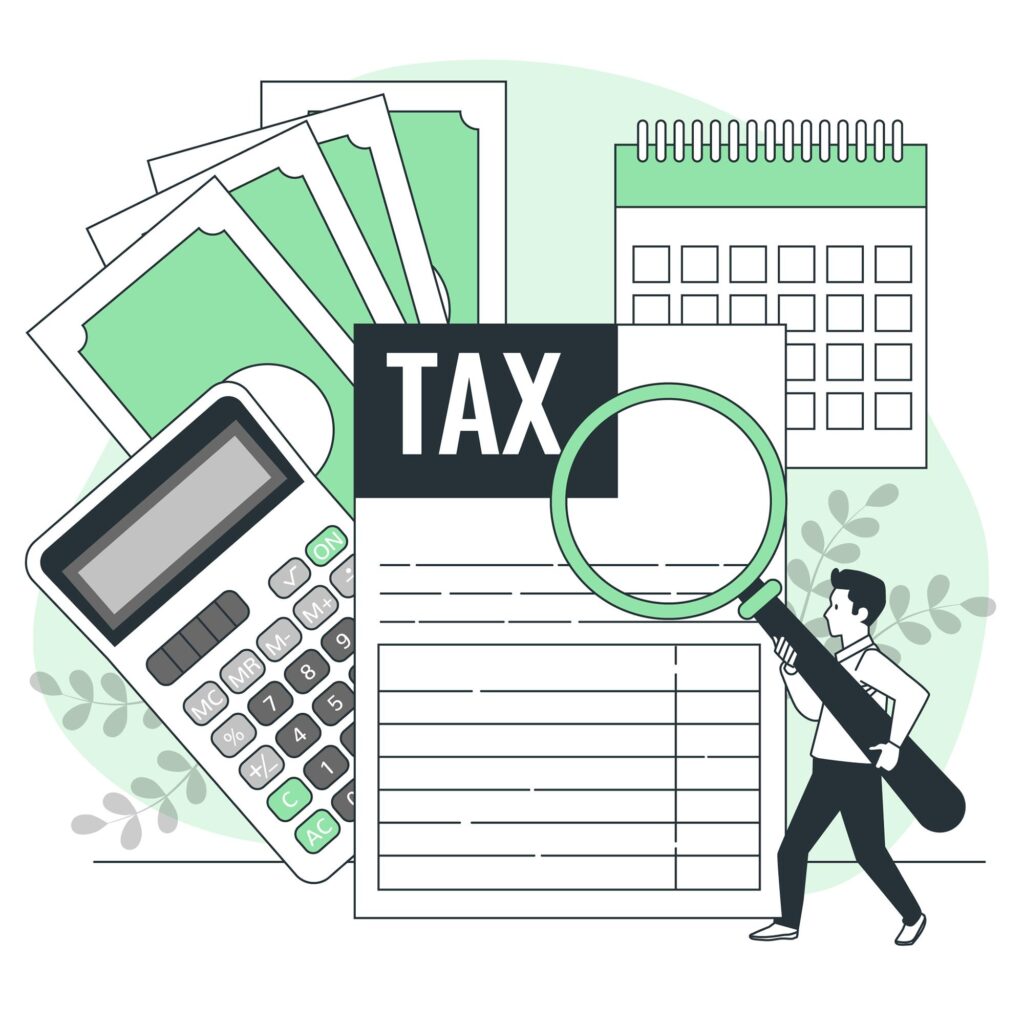What Happens If You’re Audited and Don’t Have Receipts?
Being audited without proper receipts is like explaining a group project without bringing your notes. If the IRS or CRA audits your return and you can’t produce supporting documentation, they can deny those deductions, increase your tax liability, and potentially hit you with penalties and interest.
Let’s break down what could happen if you don’t have receipts and are being audited:
What Can the IRS Do If You’re Missing Receipts?
First, don’t panic. The IRS recognizes that people misplace receipts and, in some cases, allows alternative documentation. But that doesn’t mean you can get away with it. Here’s how the process usually goes:
Step 1: You’ll Be Notified
Audits start with a letter. The IRS always reaches out by mail, never by phone or email. If you’re unsure about a letter’s authenticity, you can contact the IRS to verify it.
Step 2: Gather What You Have
Before turning over any documents, check what’s available. Review your financial statements, previous filings, and digital records. This can help you spot errors or inconsistencies before the IRS.
Step 3: Reconstructing Records
If you’re missing receipts, you’ll need to reconstruct your records. The IRS might accept reasonable alternative proof or explanations. If they still reject your claim, you have the right to appeal the decision, especially if you can show you acted in good faith.

Ways to Rebuild Missing Documentation
- Bank and credit card statements can serve as substitutes for receipts.
- Vendors or suppliers may have copies of past invoices.
- Use appointment books to show business activities and client meetings.
- Phone records can verify communication timelines or business calls.
- Use online mapping tools (like Google Maps) to rebuild a reasonable mileage log—don’t make assumptions like “200 miles per week for the year.”
Invoking the Cohan Rule
There’s a legal precedent that might work in your favor. It’s called the Cohan Rule.
In 1930, George M. Cohan, the Broadway star, was audited and had no receipts. The IRS disallowed all his expenses. Cohan fought back, claiming the costs were real but unrecorded due to his busy lifestyle. The court agreed—sort of.
The Court of Appeals ruled that some deductions should be allowed if a taxpayer can credibly show a business expense existed, even without receipts. This became the Cohan Rule, and it’s still relevant today.
That said, the rule doesn’t let you deduct random expenses without substantiation. You still need to prove the cost was reasonable, credible, and business-related.
Step 5: Be Prepared to Provide More Info
The IRS might follow up with more questions as they review your documents. This is common when you’re using alternative documentation instead of official receipts. You need to respond promptly and accurately regarding mileage logs, vendor payments, or other business expenses.
The faster you can give supporting data, the smoother your audit defense process will go.
Step 6: Review the IRS Audit Outcome
After reviewing your documents and explanations, the IRS will issue its audit findings. Thanks to the Cohan Rule, you might still be able to claim some expenses, but only those that are reasonable, credible, and in line with IRS standards.
If the agency finds your proof insufficient or overly generous, they’ll limit your deductions to conservative estimates or disallow them altogether.
Here’s the catch: without a receipt, you may only deduct the minimum standard amount the IRS assigns to that expense category.
So, even if you’re confident the expense was legitimate, it might not be fully recognized.
The IRS uses the materials you provide, internal calculations, and statutory benchmarks to determine what you can reasonably claim. Their findings, usually issued within 30 days, will show how your tax liability changes, if at all.
Step 7: Decide Whether to Settle or Appeal
Once you receive the official audit results, you have options. If the findings make sense and you owe money, you can pay. The IRS typically provides payment options, including installment plans, to help manage cash flow if needed.
But if you disagree with the audit outcome, you can file an appeal. This can involve providing new evidence, clarifying misunderstandings, or simply challenging how the IRS interpreted the data.
The audit might proceed to tax court in some cases, though most issues are resolved beforehand.
Don’t Let Business Numbers Hold You Back 🚀
Most business owners know they should get a grip on their finances — but don’t know where to start. That’s where we come in. Book a free 1-on-1 call with Tangent Consulting and let’s untangle your numbers together.
What Happens If the CRA Audits You and You Don’t Have Receipts?
Getting audited by the Canada Revenue Agency without receipts? You’re not alone, but you’ll need to do a bit more legwork to support your claims.
The CRA allows some flexibility, but they expect cooperation and backup documentation. Here’s how the process typically unfolds:
Step 1: Expect a Letter, not a Call
Just like the IRS, the CRA only reaches out by mail. If you receive any other form of communication, verify it by calling the CRA directly before proceeding. This protects you from scams and ensures the audit is legit.
Step 2: Review What You Already Have
Go through your records and pull together any available paperwork, including digital receipts, invoices, and relevant logs. Cross-check your numbers before handing them over. It helps to organize your files clearly so the CRA agent doesn’t have to dig. Labeling expenses and using reference codes will speed up the review process.
Step 3: Provide Alternate Proof
No physical receipts? That is no problem as long as you can present alternative evidence. This might include:
- Credit card or bank statements
- Supplier invoices or duplicate records
- Appointment logs or work calendars
- Mileage logs or proof of travel
The more documentation you can produce to back up your deductible expenses, the better your odds of passing the audit without additional taxes or penalties.

Step 4: Communicate Clearly with CRA Agents
Whether you’re mailing documents or meeting in person, clearly explain each item. Attach summaries or notes that tie expenses to specific business activities. The CRA might ask for more records. Try to provide what’s needed promptly. Keeping a cooperative tone during the audit process leads to better outcomes.
Step 5: Review CRA’s Audit Summary
Once the CRA has reviewed your submissions, it will calculate what it believes you should have deducted and paid in taxes.
If you didn’t meet the minimum substantiation standards, expect some deductions to be disallowed. Most results are shared within about 30 days.
Step 6: Choose to Pay or Appeal
After receiving the CRA’s audit results, you’ll have choices. If the numbers make sense, you can pay any outstanding amount. If you disagree, you can file a notice of objection and formally appeal the findings. Be sure to meet the response deadlines, which vary depending on the type of audit.
Stuck in a Tax Dispute with the CRA? We’ve Got You.
Letters. Reassessments. Headaches. CRA disputes are no joke — but you don’t have to handle it alone. Book a free 1-on-1 with Tangent Consulting and get expert support to fight back the smart way.
Why Receipts Matter in an Audit?
Receipts are among the simplest and most reliable ways to support the expenses you’ve claimed as deductions on your tax return. They’re essentially your first line of defense in an audit.
However, as we’ve covered earlier, if receipts are missing, the IRS and CRA may consider alternative forms of documentation as long as they’re clear, consistent, and reasonable.
A tax audit is a request by the tax authorities, either the IRS or CRA, to verify the accuracy of the details you submitted in your tax return.
While the easiest way to back up these claims is a clean paper (or digital) trail of receipts, tax agencies will work with alternative records if you’ve done your due diligence and can justify your claims.
Short on time? Watch a quick explainer video instead 👇
FAQs
What happens if you get audited and they find a mistake?
If the IRS or CRA finds a mistake during an audit, the outcome depends on the kind of mistake. For something simple like a math error, you’ll likely get a correction notice and a request to pay the difference.
But if the mistake leads to underreported income or disallowed deductions, you could owe back taxes, interest, and possibly penalties.
Intent matters, too. If it looks like an honest mistake, you might get off with a warning or a small fee. If it looks intentional, expect harsher consequences.
Do auditors need receipts?
Receipts aren’t legally required in every case, but they are the gold standard for supporting expenses. Auditors ask for receipts first because they are straightforward proof.
That said, if you’ve lost receipts, you can still support your case with other documentation, such as bank statements, invoices, logs, or emails.
What happens if you don’t have receipts for expenses?
It’s not ideal, but it’s not the end of the world. Tax authorities may accept alternative evidence if it ties to the expense and your business.
The key is to demonstrate that the expense was legitimate and reasonable. If you can’t prove the expense, the deduction may be denied.
Should I be worried if I get audited?
It’s normal to feel nervous, but you don’t need to panic. Many audits are triggered automatically and resolved with some back-and-forth paperwork.
If your return was prepared honestly and you have supporting records or are willing to gather them, you’ll likely pass without major issues.
What is the penalty for an audit?
There is no specific penalty just for being audited. The penalties only apply if the audit uncovers errors, underreported income, or disallowed deductions.
These could include late payment, accuracy-related penalties (around 20% of the underreported amount), and interest on unpaid taxes.
